The City in Dispute (2023) – Review
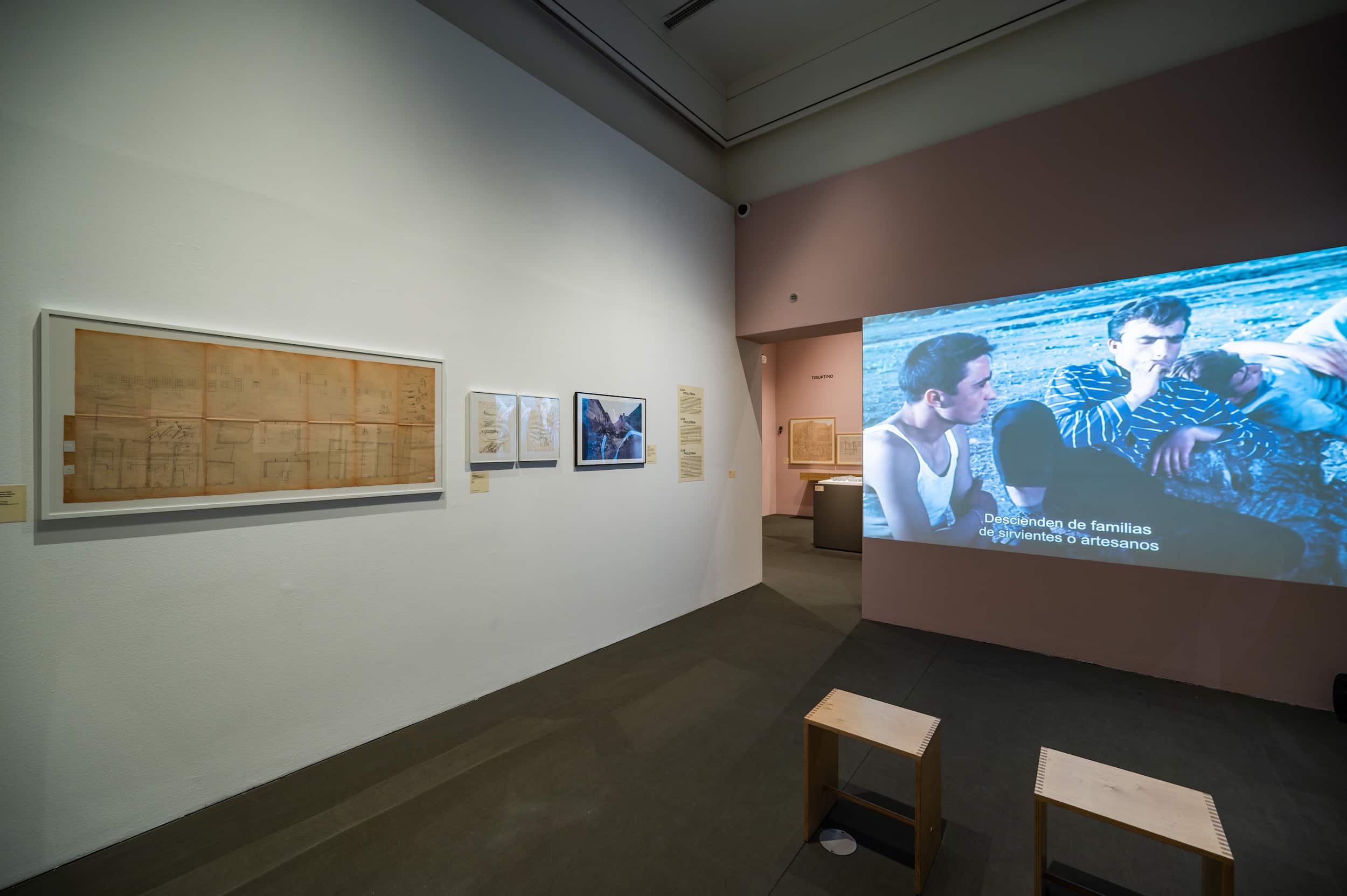
Climbing the majestic double staircase of the Palau de la Virreina, a building that hovers somewhere between the Baroque and the Rococo, one arrives at a small but intense exhibition on show at [La Virreina] Centre de la Imatge, Barcelona. Curated by María García Ruiz and Moisés Puente, it presents through case studies the recent history of social housing in southern Europe. Through examining a series of specific urban reconstruction projects carried out in Italy, Spain, and Portugal between the 1940s and the 1970s, the exhibition reveals the characteristics and peculiarities of the socio-political contexts of each of these three countries.
Using a large number of graphic documents, multi-media visuals and models from diverse archives and collections, it defines the particular modernisation process of each country as framed by and responding to their conflicting transitions towards democracy. In diverse ways, the three countries tackle the high demand for social housing that they have in common. Combined with varying degrees of concern for the dignity of the working classes, their approaches to housing play out within their specific post-war political conditions, which range from dictatorship to revolution.
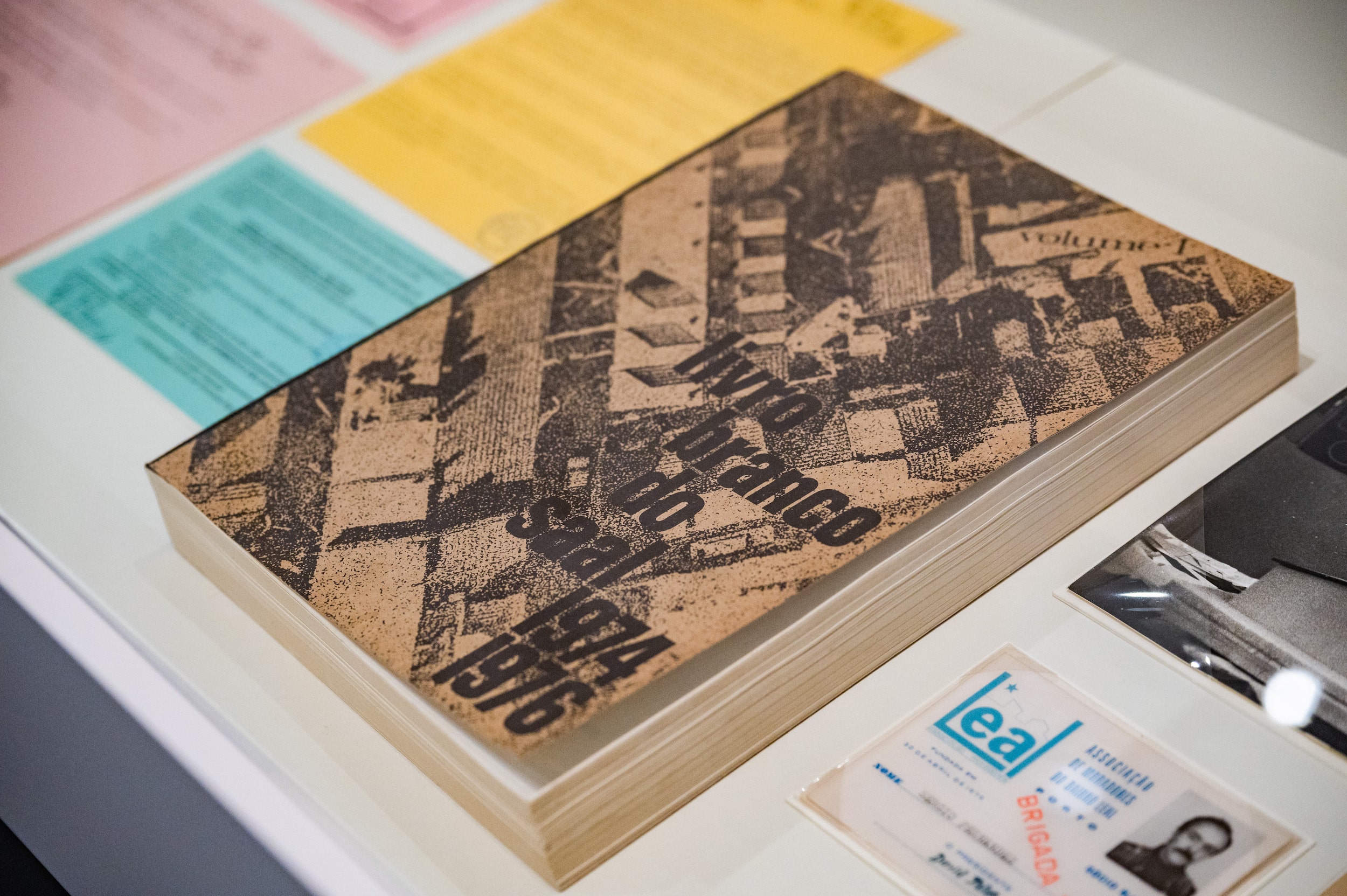
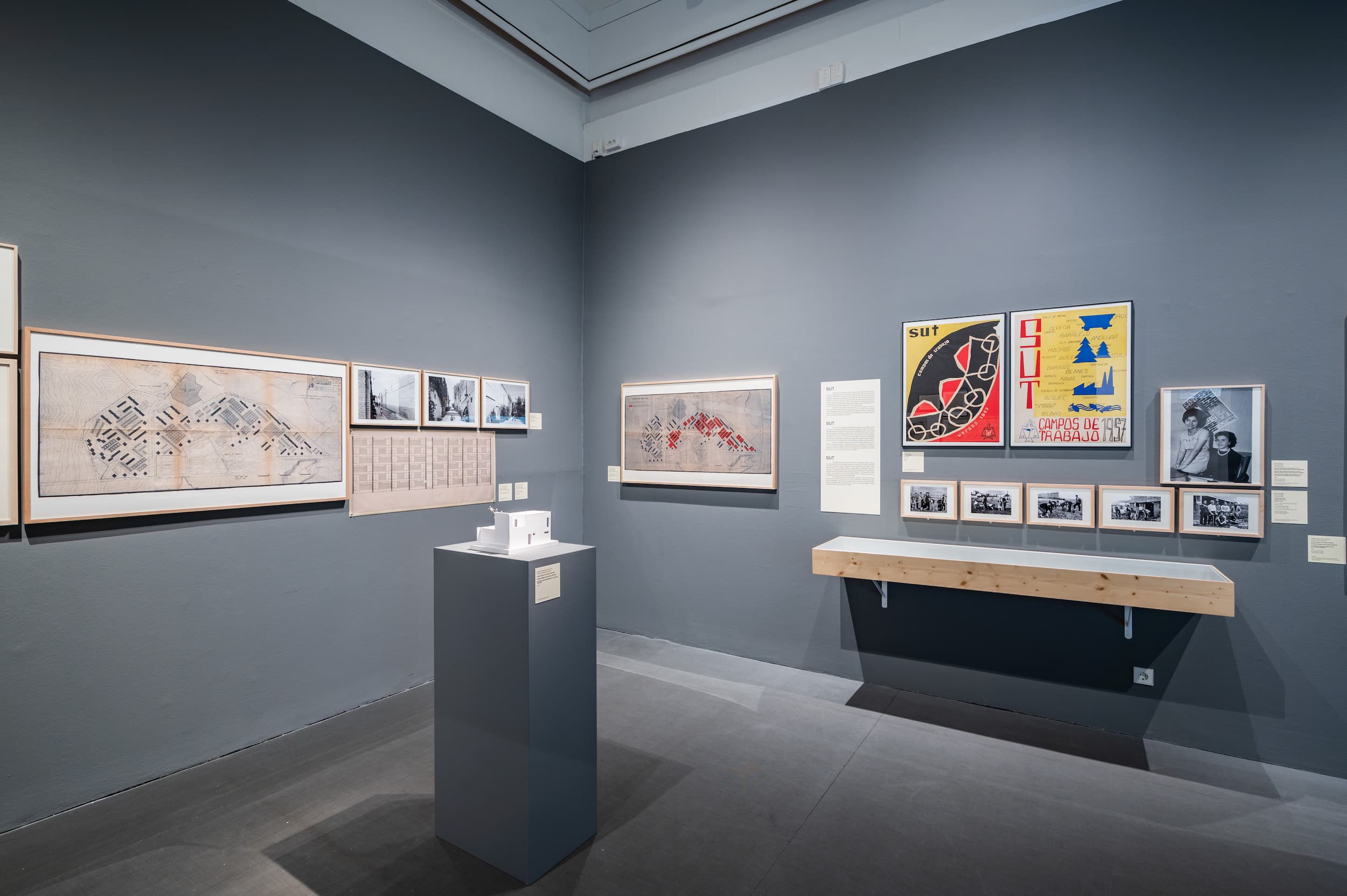
The visitor is welcomed with a selection of documents, chosen by the curators to introduce the identifying features of the three countries during this period. The neorealist reconstruction of Italy after the war is evoked by a documentary about the life of inhabitants of the suburbs of Rome, directed by Cecilia Magnini with narration by Pier Paolo Passolini; Spanish housing experiments under Franco’s dictatorship are tackled through Rafael Leoz’s ‘Hele Module’, with its radical schemes of aggregation and standardisation; and in Portugal, the focus is on the intense community processes that lie somewhere between architectural practice and political action. These were instrumental in the rebuilding of the urban fabric of the main cities in the midst of the Carnation Revolution, and are explored through plans, notes and sketches of the SAAL do São Victor in Porto, led by Álvaro Siza.
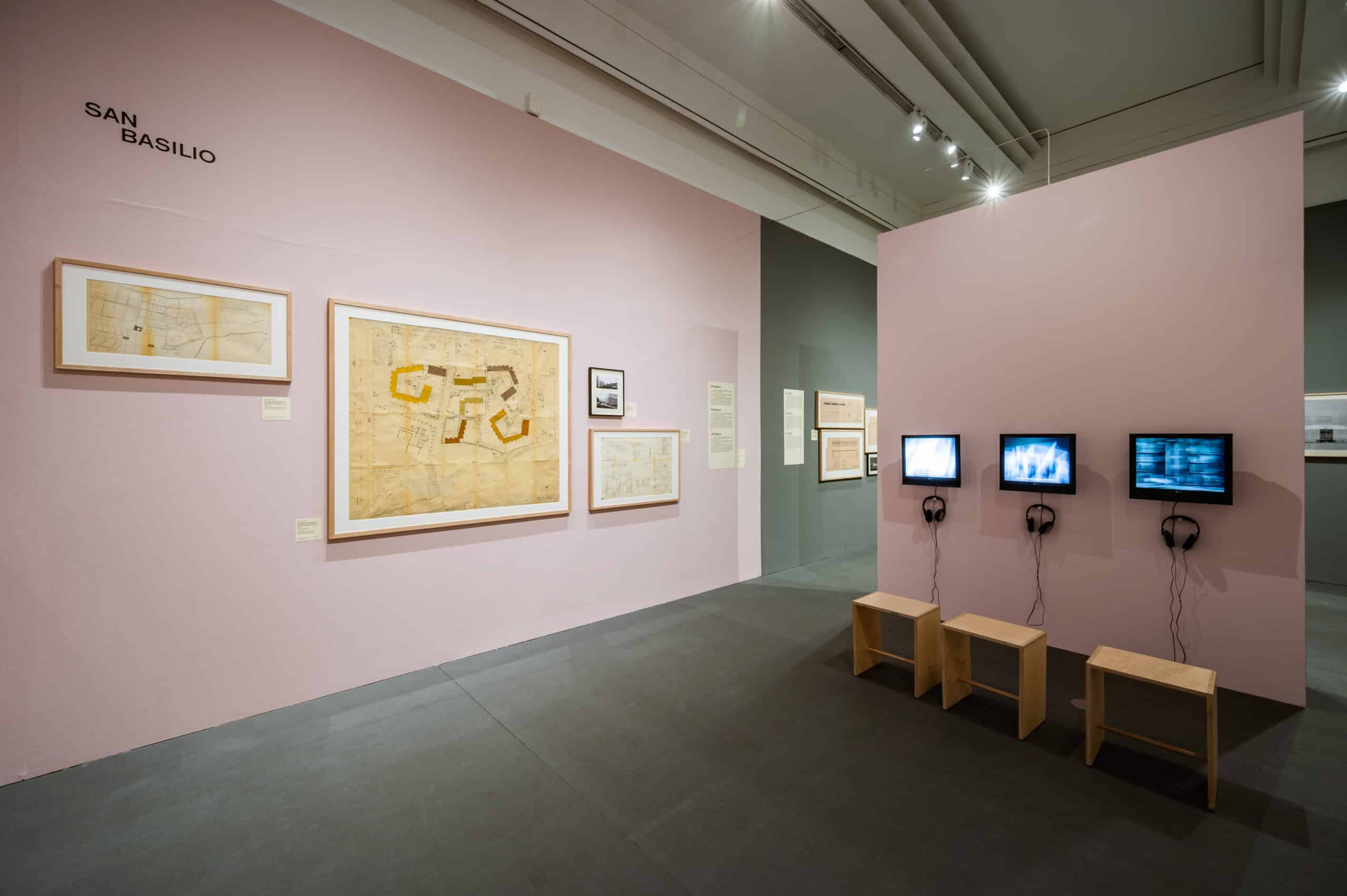
The two rooms dedicated to the Italian case studies are painted in a pale pink colour that evokes the gracious elegance of the Italian architectural sensibility. The nature of Italian suburban society is evoked through famous articles by Passolini, a documentary, and photographs of the borgate. These were extensive housing developments promoted during Mussolini’s fascist period designed to solve the problem of social housing resulting from rural migration, but also as a means to control emergent poor and left-wing urban communities.
The three case studies are all situated in Rome and represent the operations of the INA (Istituto Nazionale delle Assicurazioni), the first large social housing plan in southern Europe in the 20th century, and the UNRRA (United Nations Relief and Rehabilitation Administration). On display are projects by Mario Ridolfi and Ludovico Quaroni for the Triburtino neighbourhood, Mario Fiorentino for San Basilio, and Adalberto Libera for Tuscolano. The Italian section closes with three documentaries produced by Giancarlo de Carlo and Lodovico Quarioni (who also participated as screenwriters) and presented on the occasion of the X Milan Triennale of 1954. These bear witness to their present, while at the same time promoting the ability of architecture to change these realities.

Next are two rooms dedicated to Spanish case studies. These are painted in a grey colour that refers to the heavy darkness of Franco’s dictatorship. Here, the focus is on the singularity of the poblados dirigidos around Madrid. These are: Entrevías by Javier Sáenz de Oíza, Jaime de Alvear and Manuel Sierra Navas; Orcasitas by Rafael Leoz and Joaquín Ruiz Hervás; Caño Roto by Antonio Vázquez de Castro and José Luis Íñiguez de Onzoño. Each of these urban experiments was coordinated by young architects with a modernising drive who adapted nimbly and radically to Franco’s paternalistic control over the new working classes.
These case studies are accompanied by striking documents, such as a large mosaic of records from the sub-housing census carried out by the dictatorship to control slums built on the outskirts of Madrid. Rafael de Leoz’s ‘Hele Module’ is an investigation on housing industrialisation, while other initiatives linked to the enlightened left-wing include the SUT (Servicio Universitario del Trabajo), which allowed university students to get closer to the hardest social realities through the organisation of work camps and literacy campaigns. Also featured are the Pequeños Congresos. These were meetings between important architects in the country who, following in the footsteps of Team X, debated and defined an architecture of the Iberian Peninsula through specific topics of debate and architectural intervention. These congresses, initially hosted in Barcelona and Madrid, ended up being held all over Spain and featuring international speakers such as George Candilis, Giancarlo de Carlo, Aldo Rossi, Peter Eisenman and Vittorio Gregotti. The final meeting was held in Portugal and organised by Nuno Portas. His subsequent role as director of SAAL makes a segue to the final part of the exhibition.
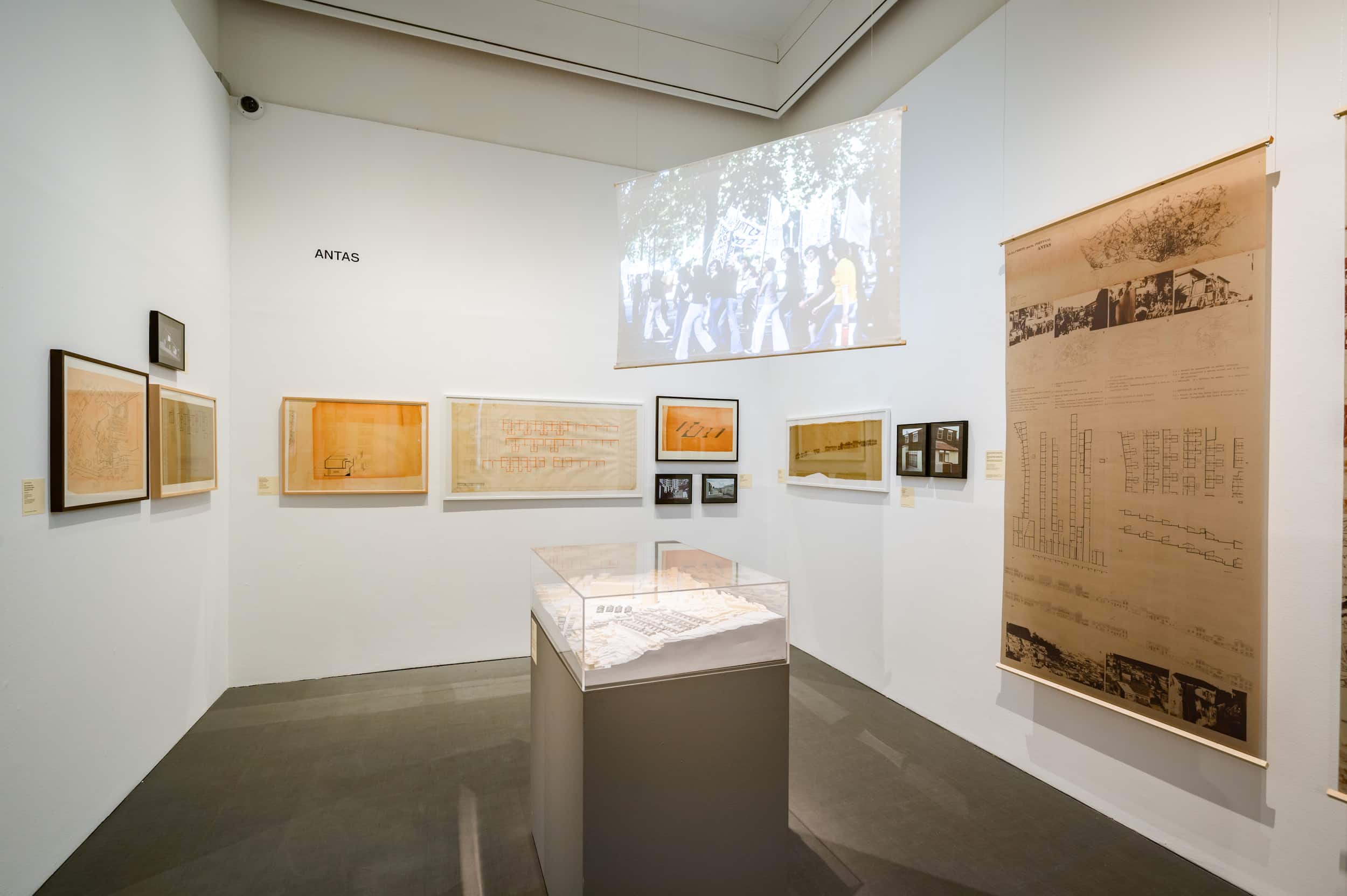
The two rooms dedicated to the Portuguese case studies are painted white, which refers to the idea of starting from scratch thanks to the revolution. This last part of the exhibition focuses on the output of just over two years by the SAAL (Serviço de Apoio Ambulatório Local). This body was composed of technical brigades that offered support to housing associations, conceived in the wake of the revolution, to solve the urgent need for housing in response to the specific conditions of each local community. Three projects are shown: SAAL do São Victor, SAAL do Leal and SAAL das Antas, for which respectively Siza, Sergio Fernandez and Pedro Ramalho were the architects, coordinated by Portas.
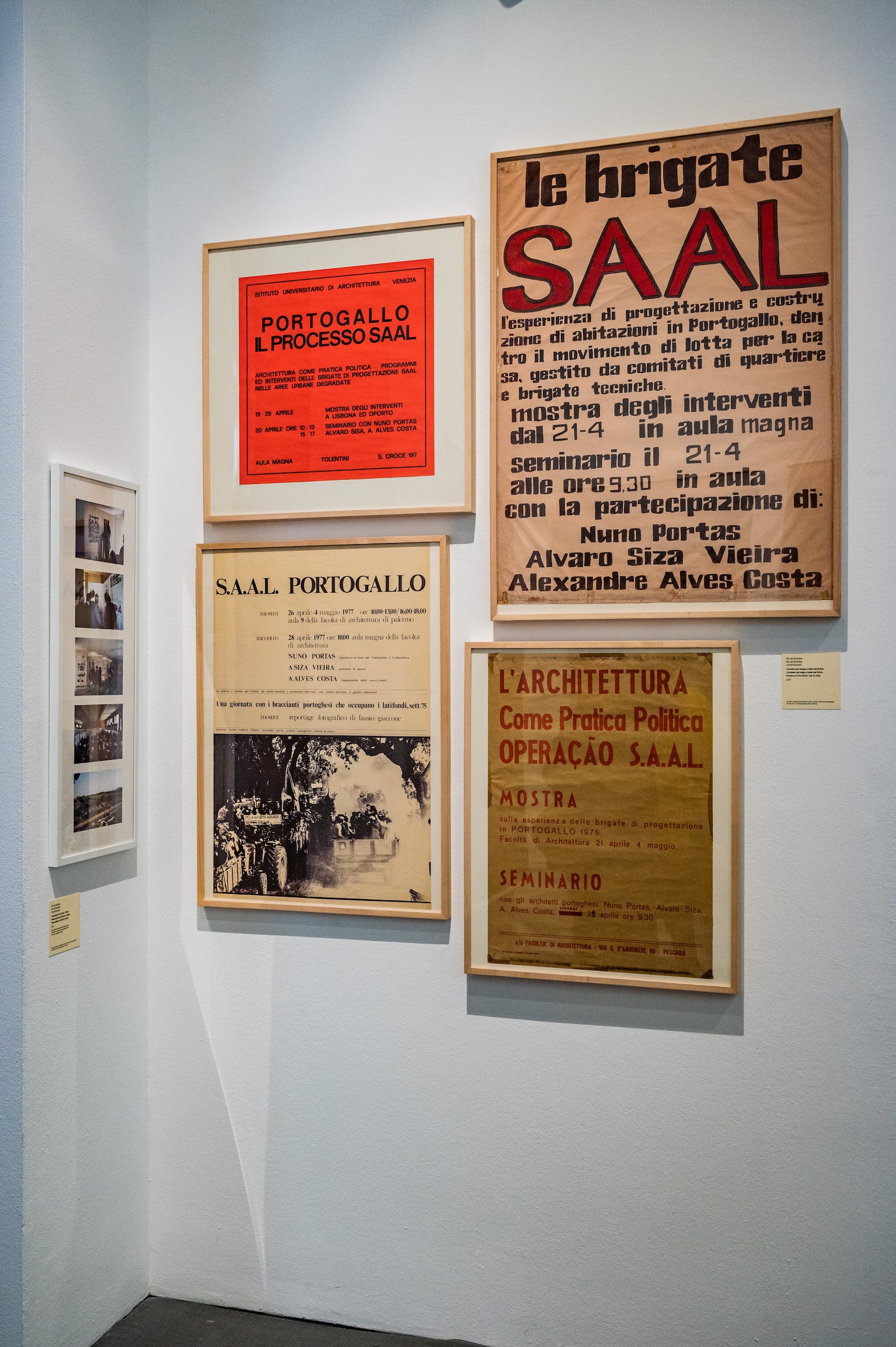
The Portuguese state of conflict and revolution is described through clips from the television programme ‘Nome Mulher’, that focus on different aspects of SAAL, including the role of women within SAAL, revolutionary banners, photographs of participatory processes from the archive of Alexandre Alves Costa, and documents from Elvira Leite’s pedagogical projects, which sought to maintain the spirit of the SAAL once the government had lost interest in it.
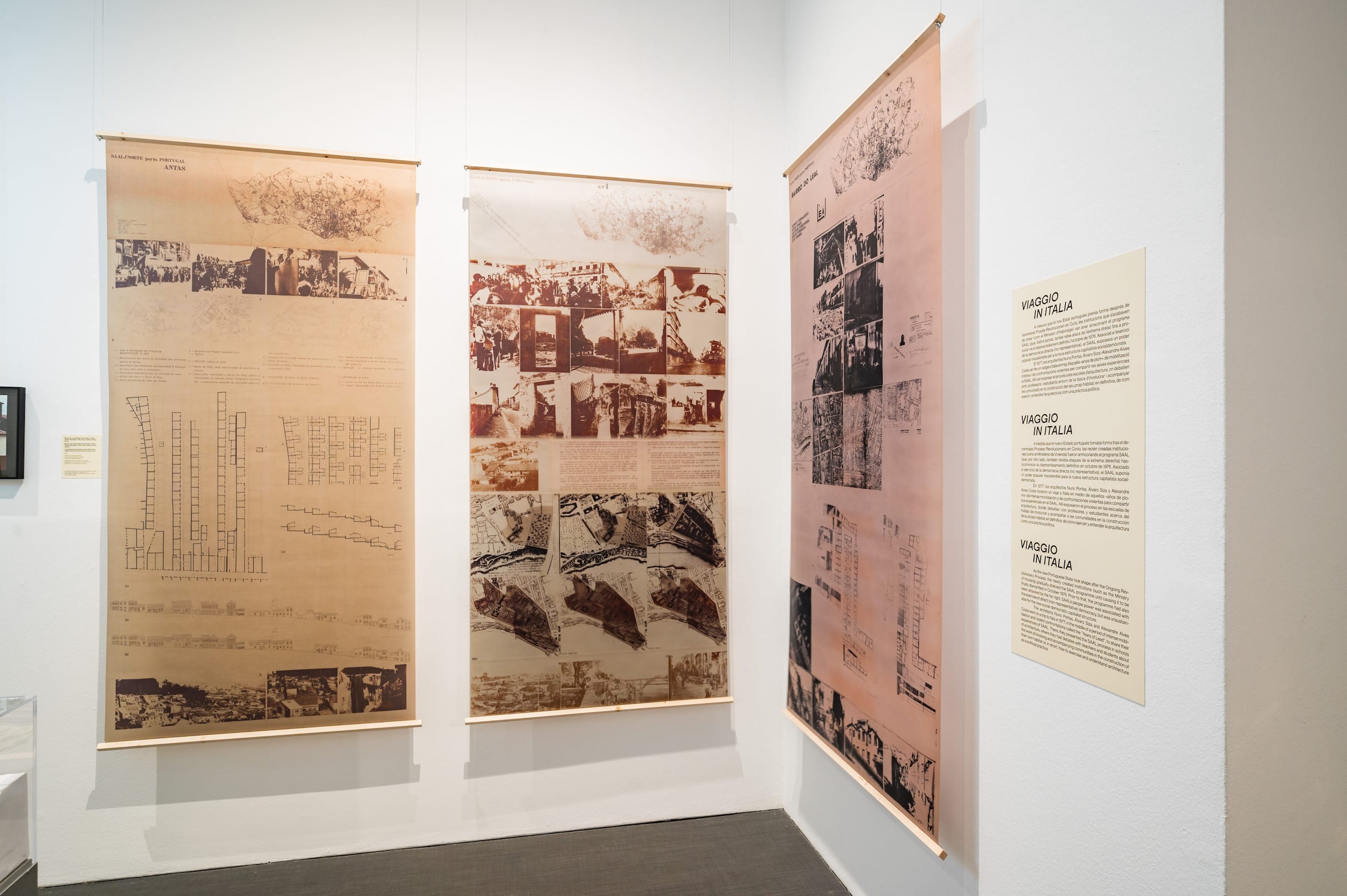
The exhibition ends with three large original panels made by Portas, Siza and Alves Costa for a trip to Italy, during which they visited several architecture schools in order to share their experiences at the SAAL. Thus, the trip closes the links between the three countries in such a way that the exhibition’s complexity comes into play, but without providing the deeper background required to fully understand those links.
María García Ruiz and Moisés Puente, The City in Dispute: Collective experiments around social housing in southern Europe (1945 – 76) is on display at [La Virreina] Centre de la Imatge in Barcelona until 4 June 2023.
Aureli Mora is an architect and founder of Amoo Studio.
This exhibition includes several sheets of drawings by Álvaro Siza from the Drawing Matter collection. A lightbox containing images of these can be viewed here.
